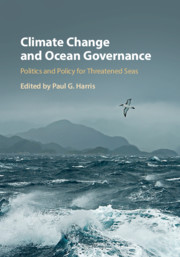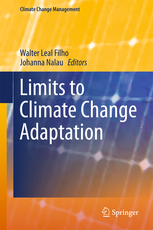Sep
1
2020
Reviewed by Nicholas Bradley Allen, Massachusetts Institute of Technology
Why do national policymakers fail to reach stable carbon pricing agreements in spite of the well-known social costs of carbon and how cross-national differences in domestic climate policymaking are controlled by business and labor?

Carbon Captured: How Business and Labor Control Climate Politics, by Matto Mildenberger, The MIT Press, 2020, 368 pp.
If we step away from observed experience, national carbon pricing policies seem like they should be easy to pass. The social costs of carbon are well known. Instruments are various and flexible enough that even those harmed by regulation can be placated. Mass movements and extreme weather heighten salience. Delay is exponentially costly. Why, then, do national policymakers fail to reach stable carbon pricing agreements?
Matto Mildenberger’s new book Carbon Captured scours a 30-year cross-national record to reveal this instability. Writing in the tradition of Theda Skocpol and other comparative political scientists, his interview-based case studies of Norway, the United States, and Australia pursue a historical-institutionalist theory of national climate politics.
Mildenberger cuts through a thicket of instruments and institutional arrangements to find a simple, chimerical advantage held by carbon polluters: their “double representation.” First, carbon-polluting industries have membership in both left and right political coalitions, ensuring any proposal will fracture internal support. Second, when reform coalitions succeed in passing carbon pricing, carbon-polluting industries may assert themselves in rulemaking or mobilize citizen resistance to higher energy costs. Administrations that marginalize carbon polluters in policy formulation, as Obama’s production-focused Clean Power Plan did, discover their opponents’ blocking power later. Countries with more stable pricing regimes, like Norway and Japan, overcome polluters’ double representation by exempting intensive industries and passing costs to consumers. Accommodation, however economically inefficient and loathsome to climate advocates, prevents sabotage.
The “double representation” thesis enriches other studies of carbon-pricing opponents’ tactical maneuvering (e.g., Oreskes and Conway 2011). Mildenberger skillfully explains why carbon, unlike other pollutants, is so successfully defended in the policymaking process. Political scientist Robert Keohane (2015) observed that climate policy stalemates have the appearance of “driving one’s car into the wall rather than trying to drive around the wall.” For those interested in the bypass, Carbon Captured offers a few different routes.
no comments | tags: Carbon Captured | posted in Climate Change, Environmental Law and Regulation, Environmental Management, Environmental Policy
Sep
1
2020
Reviewed by Jessica Gordon, Massachusetts Institute of Technology
How and why does water conflict and cooperation play out at the subnational scale?

Subnational Hydropolitics: Conflict, Cooperation and Institution Building in Shared River Basins, by Scott M. Moore, Oxford University Press, 2018, 270 pp.
How and why does water conflict and cooperation play out at the subnational scale? While the scholarly consensus places riparian geography (upstream vs. downstream) or scarcity as the primary drivers of water conflict, Moore’s book sets out to build a new theory for subnational hydropolitics. Drawing on comparative case studies from the United States, India, China, and France, Moore focuses on a combination of ideational and institutional factors: decentralization, sectional identity, and political opportunity structures.
Moore argues that water conflicts emerge when subnational politicians in decentralized political systems connect water issues to existing ethnic, linguistic, or geographic identities. This occurs within political opportunity structures where officials can gain political advantage from competing with shared jurisdictions over water. For promoting cooperation, Moore finds that third-party actors have the potential to play a large role as a bridge between sectional and elite politics. Through building alliances with national governments and advocating for interjurisdictional institutions, environmental organizations support collaborative, participatory and adaptive management of water resources, ultimately leading to durable cooperation that exists beyond a political tenure.
The first part of the book presents three theoretical chapters that provide the conceptual framework across the three primary factors that influence cooperation and conflict. The second part provides detailed historical comparative case studies. The U.S. cases explore the Delaware River Basin and the Colorado River Basin as examples of cooperation and conflict, respectively. In India, the Damodar Valley Corporation is presented as a case of cooperation and the Krishna River Basin as a case of conflict. These are followed by the case of the Yellow River Conservancy Commission in China and river basin agencies in France to test the theory built through the U.S. and India cases.
While much work has focused on international water conflict, Moore makes strong claims for why local water politics deserve our attention and efforts. The final chapter provides useful recommendations for policymakers including the need for national leadership and areas for further research. This book is an engaging examination of comparative water politics that will appeal to students, scholars, and practitioners.
no comments | tags: Hydropolitics | posted in Environmental Law and Regulation, Environmental Management, Oceans and Marine Policy, Water
Jun
1
2020
Reviewed by Shekhar Chandra, Massachusetts Institute of Technology
Why are major developing economies like China and India moving fast in adopting renewable energy sources to fuel their economies and what are the implications it has for the economy of oil-rich countries like Saudi Arabia?

Renewable Energy: A Primer for the Twenty-First Century by Bruce Usher, Columbia University Press, 2019, 224 pp.
Historically, from wood to coal, coal to oil and gas, and now renewables, the global energy sector has undergone immense technological changes. In recent years, the share of renewable sources of energy, mainly wind and solar, has been increasingly sharply in the energy consumption profile of the countries mainly driven by falling renewable prices, geopolitical uncertainty, and the mounting climate change concerns. As the price of renewables falls further and become even lower than the fossil sources of energy and the role of climate change becomes more central to public policy, it would result into an inevitable transition from fossil energy sources to renewables. The author asks the question whether the world is prepared to handle the consequences of this transition. It is because the transition has implications for the businesses—the growth of solar PV and electric vehicles, and renewable energy storage technology—for the economy of the countries, their geopolitics as well the degree to which they are able to minimize some of the worst impacts of climate change.
The book provides a comprehensive review of these complex challenges, makes a business and climate case for renewables, and how different countries and businesses are going to be either winners or losers depending on their ability to better adapt to these technological changes. It also provides a good explanation why the major developing economies like China and India are moving fast in adopting renewable energy sources to fuel their economies and the implications it has for the economy of oil-rich countries like Saudi Arabia. However, in explaining the transition of the energy sector, mainly the unprecedented growth of renewables, the author relies more on the economic forces and formal institutions. This could be a gap as the recent research identifies federal and state politics and informal institutions like individual and societal values as important determinants of the development and adoption of the renewable energy; hence the causal role of economic forces in explaining the rise of renewables in the book may be an overestimation. Overall, the book uses many interesting statistics, which makes it a helpful guide to policymakers, consumers, and businesses to leverage the changes due to the rise of renewables by better planning their energy future.
no comments | tags: Climate Change, Ecosystem Services and Conservation, Energy Efficiency, Energy Policy, environmental economics, Renewable Energy | posted in Climate Change, Ecosystem Services and Conservation, Energy Efficiency, Energy policy, Environmental Economics, Environmental Management, Renewable Energy
Jun
1
2020
Reviewed by Aria Ritz Finkelstein, Massachusetts Institute of Technology
How will marine institutions, laws, and policies respond to radically and quickly changing seas?

Climate Change and Ocean Governance: Politics and Policy for Threatened Seas, edited by Paul G. Harris, Cambridge University Press, 2019, 445 pp.
This edited volume starts to fill what is still a major gap in the ocean governance literature—the existing regime’s ability to respond to climate change. The meat of the book is split into five sections: The risks that small islands and coasts face; marine fisheries; possibilities for polar governance; mismatches between ecosystems and governance regimes; and specific issues or cases across sectors rather than across regions.
A case study approach allows each chapter to explore an issue in its specificities while extrapolating broadly applicable lessons. This brief a review can’t begin to do the collection justice, but just one example: Alger’s Chapter 11 illustrates the complex stakeholder politics of large-scale marine protected areas. For instance, often the fishing industry fights with environmentalists to push for “management” rather than “protection.” Alger argues that, while the pushback may seem disproportionate to the actual impact on the fisheries, it is partly due to the fishing community needing to manage the challenge of decreased yields even without the addition of no-take zones threatening to lower their catch.
While the thread throughout the book is oceans, the chapters ask to be separated into two volumes—one on ocean governance and one on coastal adaptation. Each raises such different legal and governance questions (with the exception of how rising seas will affect territorial claims) that bundle them but diminishes the collection’s clarity. Nevertheless, the book is a rich, accessible picture of how ocean governance institutions are currently dealing with the effects of climate change, the challenges they face, and how they might address climate change in the future. It represents a field of inquiry in its youth, and together the chapters lay out an array of important questions and offer launching points for future investigations.
no comments | tags: Climate Change, Ecosystem Services and Conservation, environmental management, environmental policy, ocean governance, Oceans and Marine Policy | posted in Climate Change, Ecosystem Services and Conservation, Environmental Management, Environmental Policy, Oceans and Marine Policy
Jun
1
2020
Reviewed by Michael Raleigh and Dr. Kelly Dunning, Conservation Governance Lab, Auburn School of Forestry and Wildlife Sciences
What are the biophysical, sociocultural, and economic limits that are emerging or have emerged in areas most vulnerable to climate change?

Limits to Climate Change Adaptation, edited by Walter Leal Filho and Johanna Nalau, Springer International Publishing, 2018, 410 pp
Research on climate change adaptation has grown over the past decade as global responses have shifted from avoidance seeking to risk management. Discussions of adaptation inherently involve limits or points at which objectives cannot be met due to increasing risk from a changing climate. The IPCC’s Fifth Assessment Report defined limits as biophysical, sociocultural, and economic. The editors note the IPCC’s call for further research into types of limits and have responded by examining limits on a regional scale. The purpose of their book is to explore limits that are emerging or have emerged in areas most vulnerable to climate change.
The book is divided into four sections, each focusing on a specific region: Asia, Africa, Australia, North America, and Europe, and the Pacific region of small island states. The regional focus makes it easier for researchers to find material relevant to their own work. Chapters of particular interest include an interdisciplinary analysis of limits to adaptation within Zimbabwe (6) and perceived limits within the pastoral communities in the Sahel (7).
A novel conceptualization of psychological limits takes the definition beyond environmental and into the realm of socially constructed risks (12), and analysis within small island developing states brings awareness to the interdisciplinary nature of limits (15). The last section is particularly crucial and emphasizes current, ongoing limits to adaptation within highly vulnerable Pacific island-states and atolls. Each chapter succeeds in broadening the IPCC’s definition and recognizes the complex factors comprising limits to adaptation. The broadly regional organization of the book suggests that limits can be defined on large scales; however, there are strong cultural differences between countries within each defined region that undoubtedly impact limits. The organization of the book would have benefited from a narrowing of scope (i.e., Southeast Asia, Central Africa) to prevent overgeneralization. Organization aside, the book far exceeds the IPCC’s call for a broader definition of limits. Filho and Nalau have presented a guidepost illuminating limits to adaptation in the most vulnerable parts of our world. The book is at its best when it makes regional climate adaptation science almost visceral. The imagery of the loss of cattle in pastoralist communities in a rainstorm brings the regional focus to a very human scale, evoking an earnest emotional response in the reader and conveying the seriousness of the climate crisis.
no comments | tags: climate adaptation, Climate Change, Climate Governance, global climate initiatives, risk management, Risk; Science and Technology | posted in Climate Change, Ecosystem Services and Conservation, Environmental Management, Environmental Policy, Risk, Science & Technology





